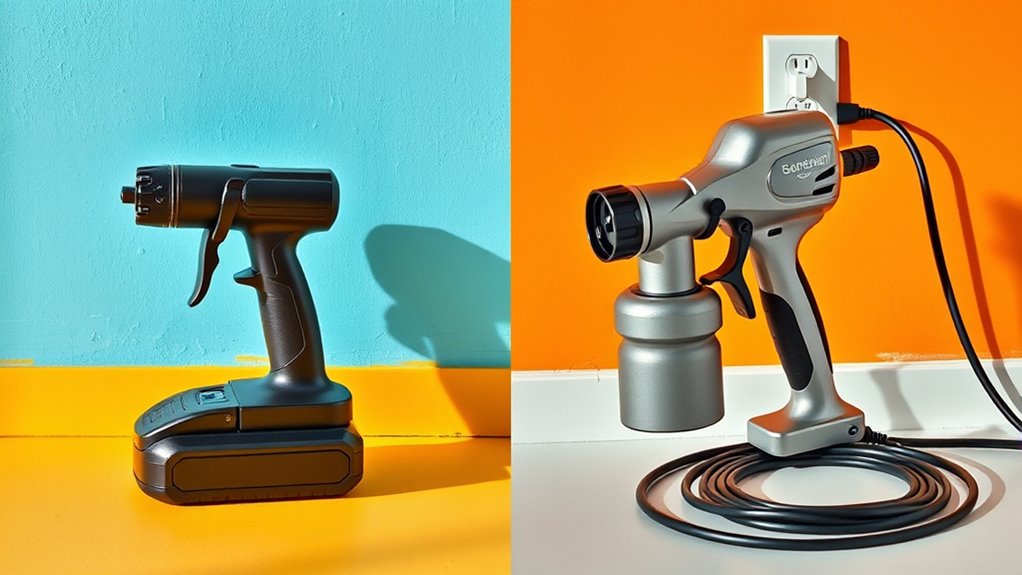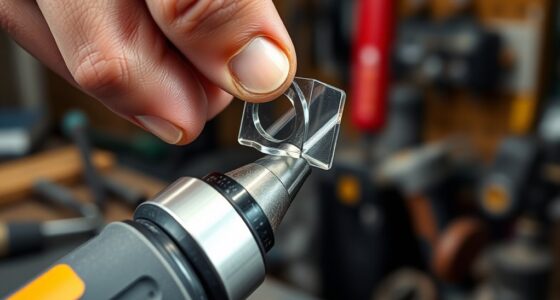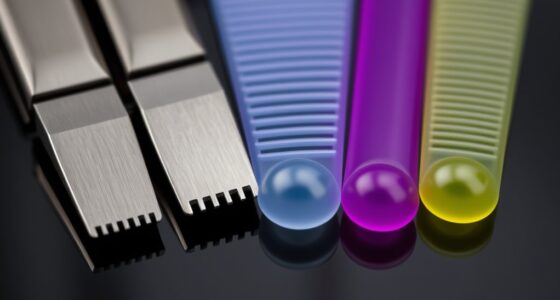Deciding if cordless paint sprayers are worth it depends on your project needs. If you value mobility and quick setup, a cordless model offers great convenience, especially for small or outdoor jobs. However, battery life and power stability can limit longer or detailed tasks. Corded sprayers provide consistent performance and are better for large projects. To find out more about which option suits you best, explore the details ahead.
Key Takeaways
- Cordless sprayers offer greater mobility and convenience, ideal for small to medium projects and hard-to-reach areas.
- Corded sprayers provide consistent, stable power for large-scale or professional tasks, reducing the risk of pressure fluctuations.
- Battery life in cordless models limits continuous work, requiring multiple batteries or frequent recharging for extended projects.
- Corded sprayers eliminate power concerns, ensuring steady performance without interruptions during lengthy or demanding jobs.
- Choosing between them depends on project scale, location, and need for portability versus consistent power.

When choosing between cordless and corded paint sprayers, your decision hinges on factors like mobility, power, and convenience. If you’re considering a cordless model, one of the most vital aspects to evaluate is battery life. A longer-lasting battery allows you to work uninterrupted, especially on large projects, without constantly stopping to recharge. However, even the best batteries can drain faster when you’re spraying thick paints or working continuously for extended periods. This can impact your workflow if you don’t have spare batteries on hand. Another key point is power consistency. Cordless sprayers rely on batteries that may experience voltage drops as they deplete, leading to fluctuations in spray pressure. This inconsistency can result in uneven coats or splattering, which might be frustrating if you’re aiming for a professional finish. On the flip side, corded paint sprayers provide a steady power supply, ensuring consistent spray performance no matter how long you work. Without the worry of battery drain, you can focus solely on your job, knowing the sprayer’s power remains stable throughout the project. Additionally, water efficiency is a consideration, as cordless models may sometimes use more water to compensate for fluctuating pressure, affecting material usage. Mobility is where cordless sprayers shine. Without a cord tethering you to an outlet, you can move freely around your workspace, reach difficult angles, and work in outdoor or remote locations where power sources might be scarce. This flexibility makes cordless models ideal for small to medium projects or jobs in tight spaces. Conversely, corded sprayers excel in situations requiring long hours of continuous spraying, such as large-scale renovations or industrial tasks. The constant power supply eliminates concerns about battery life or recharge times, allowing you to work seamlessly without interruptions. While some might see the cord as a hindrance, it actually ensures a more reliable and consistent operation for demanding jobs. Ultimately, whether a cordless or corded paint sprayer is better for you depends on your specific needs. If you prioritize ease of movement, quick setup, and working in locations without easy access to power, a cordless model with a high-capacity battery might be worth the investment. But if you need uninterrupted power and consistent performance for extensive projects, sticking with a corded sprayer could be the smarter choice. Both options have their merits, but understanding how battery life and power consistency affect your workflow will help you make the best decision for your projects.
Frequently Asked Questions
How Long Does the Battery Typically Last on a Cordless Paint Sprayer?
Your cordless paint sprayer’s battery life usually lasts around 20 to 30 minutes of continuous use, depending on the model and workload. Keep in mind, recharge time can take anywhere from 1 to 4 hours, so plan your projects accordingly. To maximize efficiency, consider having spare batteries on hand. This way, you can swap out batteries and keep painting without lengthy interruptions, ensuring a smooth workflow.
Are Cordless Sprayers Compatible With All Types of Paint?
Like Pandora’s box, cordless sprayers open up possibilities, but you’ll find paint compatibility varies. Not all cordless sprayers handle every paint type; some have limitations with thick or oil-based paints. Always check the manufacturer’s guidelines to see if your desired paint fits within their compatibility range. This guarantees your project stays smooth, avoiding clogs or damage, and helps you choose the right sprayer for your specific paint needs.
What Is the Average Weight Difference Between Cordless and Corded Models?
You might wonder about the weight comparison between cordless and corded paint sprayers. On average, cordless models are lighter, typically weighing around 4 to 6 pounds, making them easier to handle. This lighter weight is due to the battery, which adds some weight but still results in a more portable tool. Battery life varies, but it generally supports longer projects without fatigue, enhancing your overall painting experience.
Do Cordless Sprayers Require More Maintenance Than Corded Ones?
Battery blunders burden cordless sprayers more, so you might find yourself fussing over frequent maintenance. They require regular battery checks, cleaning, and occasional replacements, especially if the battery life dwindles or charging time drags on. Corded models, meanwhile, stay steady with less fuss—just keep the cord clean and functional. Overall, cordless tools demand more maintenance effort to keep them performing perfectly, unlike their corded counterparts that stay simpler and more reliable.
Can Cordless Paint Sprayers Be Used for Commercial Painting Projects?
You can use cordless paint sprayers for commercial projects, but consider their battery life and paint compatibility first. They’re great for small to medium jobs, offering mobility and convenience. However, for larger projects, their limited battery life might require multiple charges, slowing you down. Make sure the sprayer’s paint compatibility matches your project’s requirements. If those factors align, a cordless sprayer can definitely be a practical choice.
Conclusion
Choosing between cordless and corded paint sprayers ultimately depends on your needs. While cordless models offer freedom and convenience, they might lack the power and runtime of corded ones. On the other hand, corded sprayers provide consistent performance but tie you down with a cord. So, do you value mobility or uninterrupted power? Weigh your projects carefully—sometimes, going wireless isn’t just a trend, it’s a game-changer, but other times, staying wired makes all the difference.
Franz came aboard the Paint Sprayer Zone team with a background in both journalism and home renovation. His articulate writing style, combined with a passion for DIY projects, makes him an invaluable asset. Franz has a knack for breaking down technical jargon into easy-to-understand content, ensuring that even the most novice of readers can grasp the complexities of paint sprayers.










